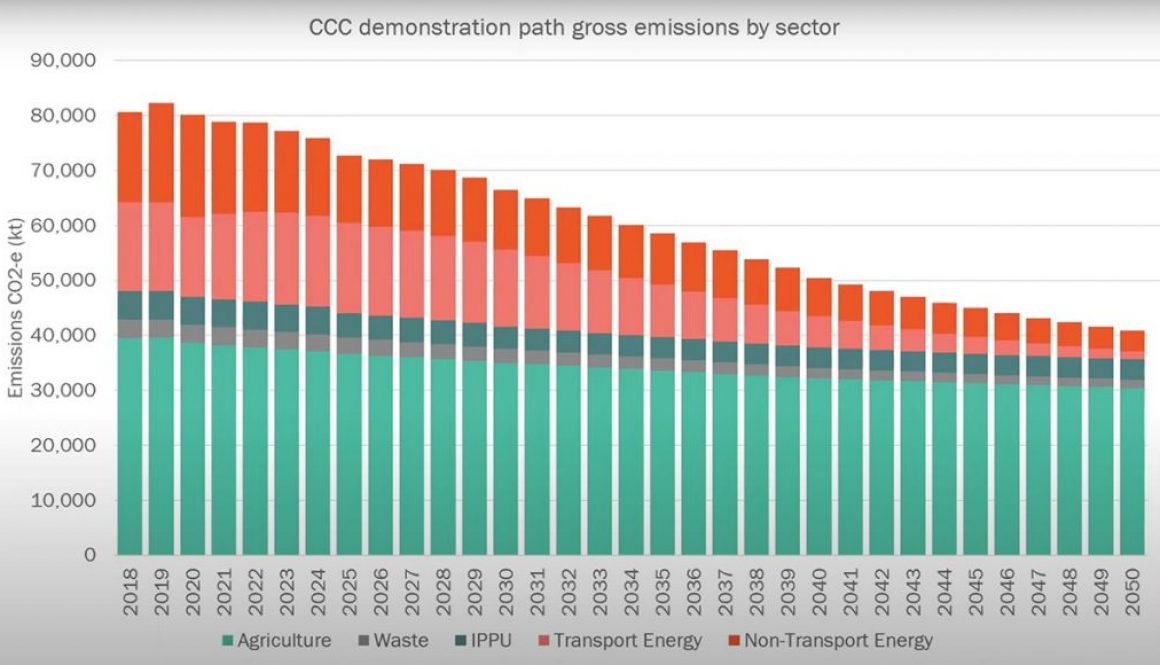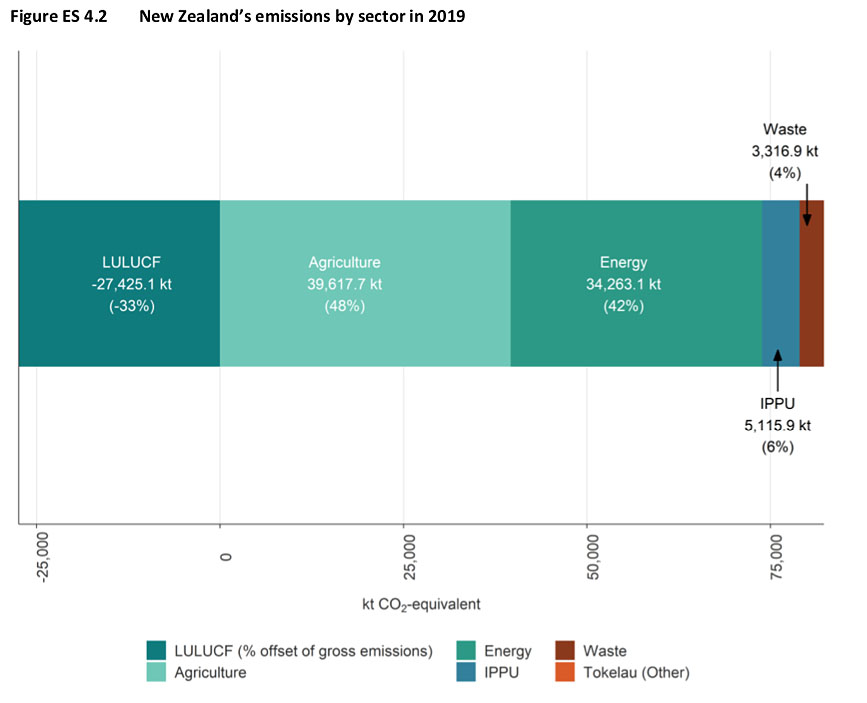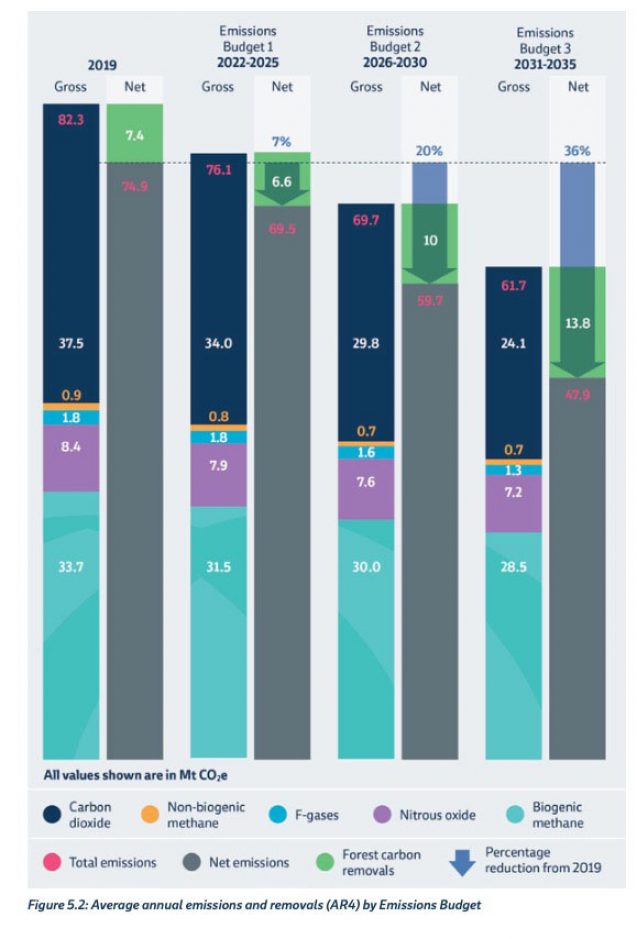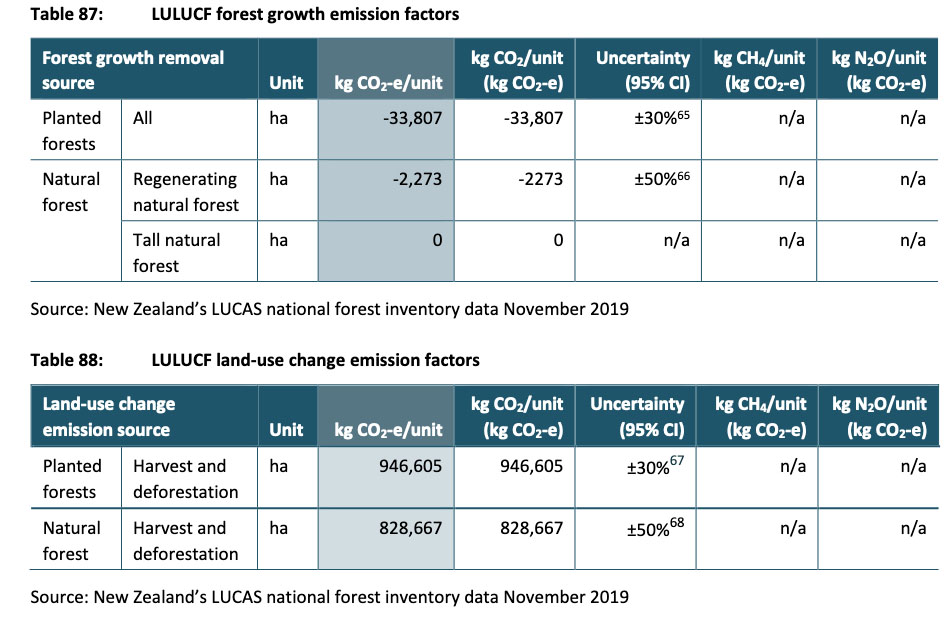In 2019, Aotearoa’s net greenhouse gas emissions were 54.9 mt (megatonnes) of CO2-e (that means all greenhouse gases added together).
The single biggest emitter was agriculture: 48% or 39.6 mt (Figure ES 4.2).
From a climate warming perspective, all of that 54.9 mt of carbon was added to the excessive carbon debt—the highest in several million years—already in the atmosphere. But economists and policymakers are writing off this carbon debt because the goal is not to stop feeding the climate beast with more greenhouse gases. Nope. The goal is to keep adding more so that we can meet our obligations under the 2015 Paris Agreement to keep global temperatures under 1.5°C.
Yes, I know it’s irrational to be fixated on a 9-year old agreement that only one tiny country, Gambia, is anywhere close to meeting, using a budget to 2035 that’s going to be broken before then, given that the World Meteorological Organisation estimates we could reach 1.5°C sometime in 2026 [update 2024: we reached that in 2023]. But since irrational economics is driving our plan, let’s use their figures, and with a bit of simple arithmetic, calculate what our agricultural emissions will cost as we head into 2026, the first year that the agricultural sector in Aotearoa has to start paying for any of its emissions.
You may need a primer in the ETS (Emissions Trading Scheme) for this next bit to make sense, but simply put, it’s a polluter-pays scheme that places a $ value on CO2-e. Each 1-tonne of CO2-e is called a New Zealand Unit or NZU. They’re tradable commodities, so the rules of supply and demand mean prices fluctuate. In March 2021, one NZU cost $36. By September, it was $65, because by then, a lot of people had already done the calculations set out below, and realised how valuable these NZUs are going to become.
But let’s be really conservative and say an NZU is going to stay at $65.00 for the next three years. All we need to do is multiply $65 by the net amount of e-carbon emitted during that period. We’ll base the emissions on the Climate Commission proposed emissions budgets (Fig. 5.2 below). Again, these budgets are likely optimistic, but let’s be optimistic.
Years 2022-2025 net emissions = 208.5 mt total. As a megaton (mt) = 1,000,000 tonnes, that’s 2,085,000,000 tonnes x $65 = total $135,525,000,000 over three years.
Remember, the agricultural sector is exempt until 2026, so they don’t have to pay a cent of this.
Year 2026: By now, because they’ve had no incentives to change, the agricultural sector is assumed to be contributing 58% of all greenhouse gases to the atmosphere. The price of an NZU is expected to increase to $73.60. It’s probably going to be waaay higher, but let’s stick with that very conservative price estimate, to work out how much the agricultural sector should pay, using the emissions budget in Fig. 5.2 below, of 59.7 gt net emissions. That’s x 58% x 59,700,000 x $73.60 = $2,548,473,600.
If the number of zeros is confounding, that’s $2.55 billion worth of emissions. In one year. Just from agriculture.
But under New Zealand’s ETS, in 2026, agriculture is given a 95% discount. So they’re up for just $127,423,680 ($127.5 million). In fact, the agricultural sector is barely expected to reduce emissions by 11% by 2050 (see the graph at the top of this page).
Yes, I also know that the $ value under the ETS is not designed to put an actual value on emissions. It’s just an economic mechanism to incentivise industries to reduce emissions so that we can meet an outdated target to keep us under 1.5°C. But it’s the only mechanism we have. In the real world, all those greenhouse gases will be going into the atmosphere, feeding the climate beast, generating record-breaking floods and droughts that will bring serious costs to agriculture, because plans and policies based on economics can’t trump the laws of physics and chemistry and nature doesn’t do bailouts.
Maybe now is a good time to invest in food that’s grown like beer.




